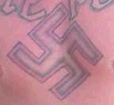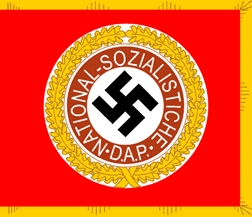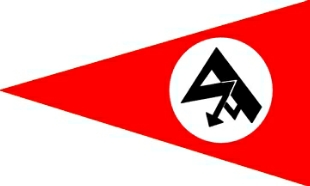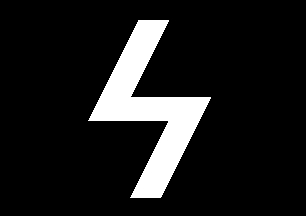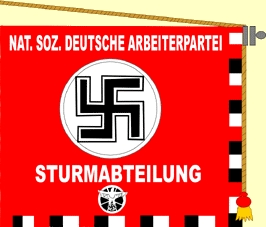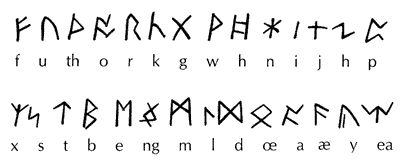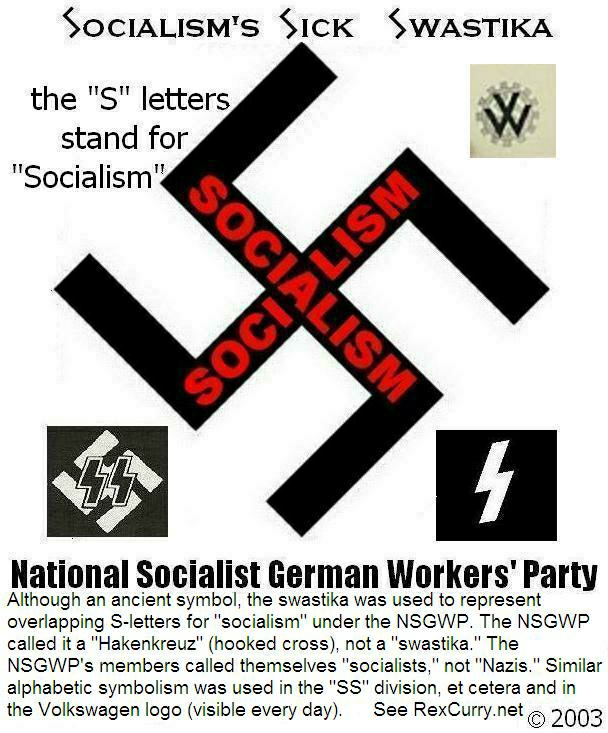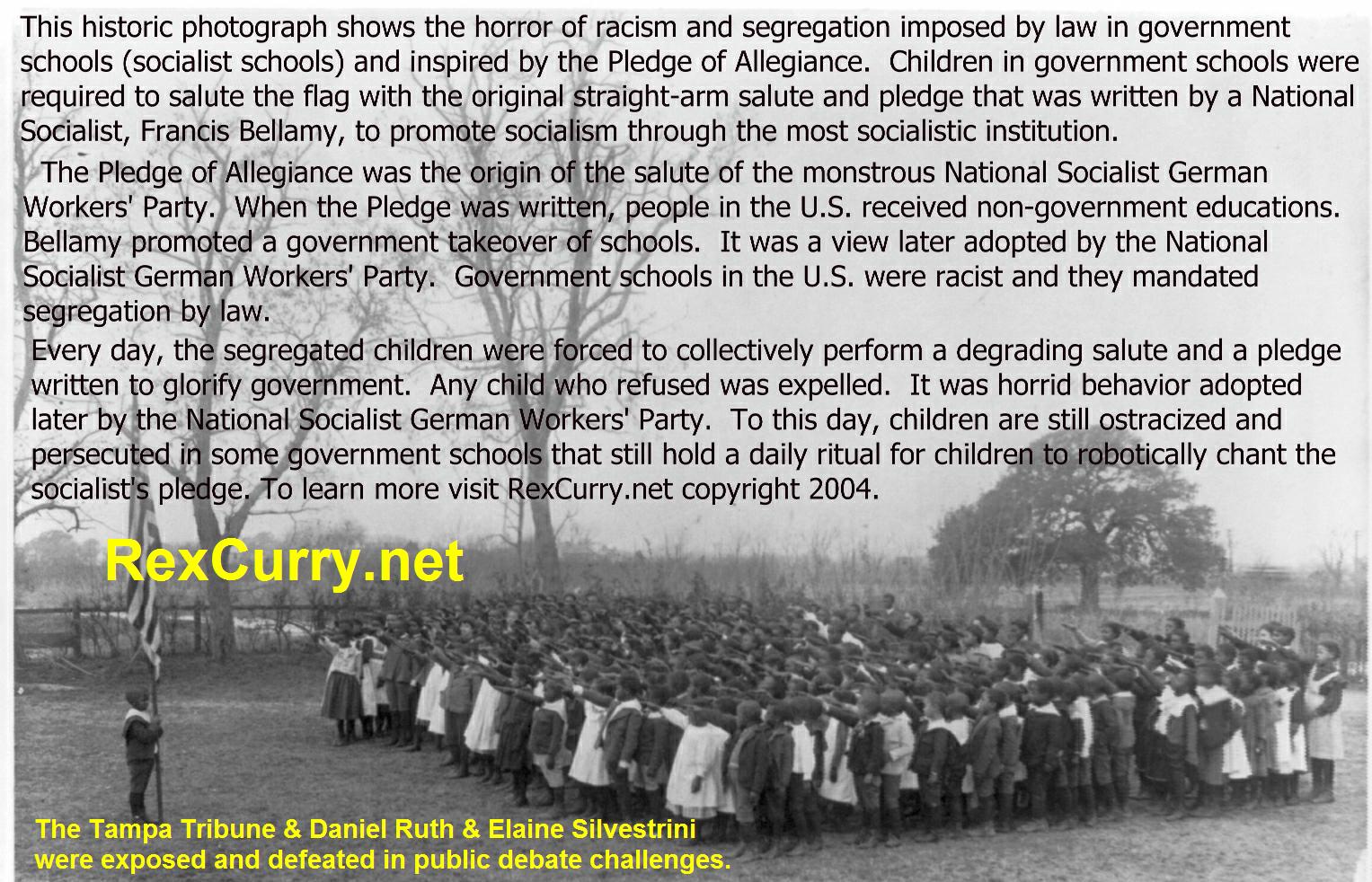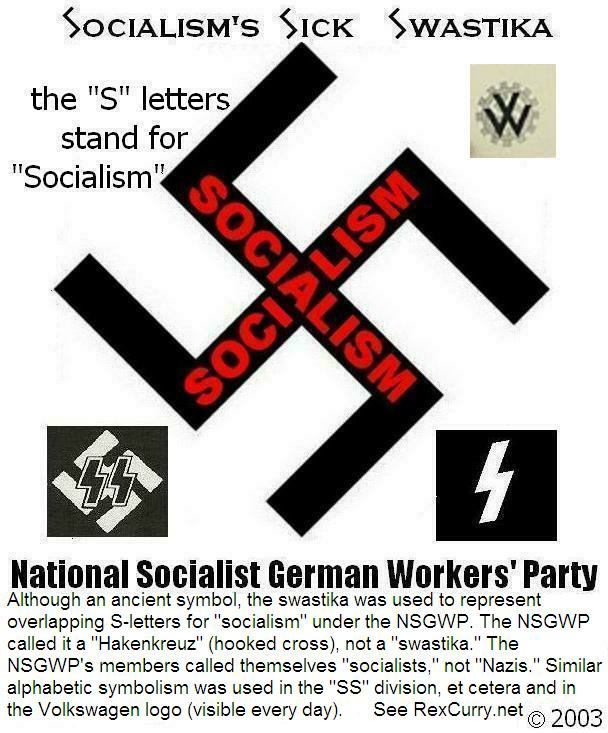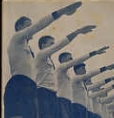
|
The
Pledge of Allegiance (& the military salute) was the origin of Adolf
Hitler's salute under the National Socialist German Workers Party (Nazis).
http://rexcurry.net/pledge2.html Francis Bellamy & Edward Bellamy touted National Socialism and the police state in the USA decades before their dogma was exported to Germany. They influenced the NSDAP, its dogma, symbols and rituals. http://rexcurry.net/police-state.html |
The swastika, although an ancient symbol, was also used
to represent "S" letters joined for "socialism" under the National Socialist
German Workers Party (Nazis), similar to the alphabetical symbolism for
the SS Division, the SA, the NSV, and the VW logo (the letters "V" and
"W" joined for "Volkswagen"). http://rexcurry.net/bookchapter4a1a2a1.html |
||
| Support Professor
Curry in his fight against the National Socialist German Workers'
Party and its atrocious legacies in modern politics. For more information regarding Nazi policies in the USA see http://rexcurry.net/police-state.html |

Swastikas' Alphabetical Symbolism and the NSV (National Socialist Volunteers) a charity under of the National Socialist German Workers' Party 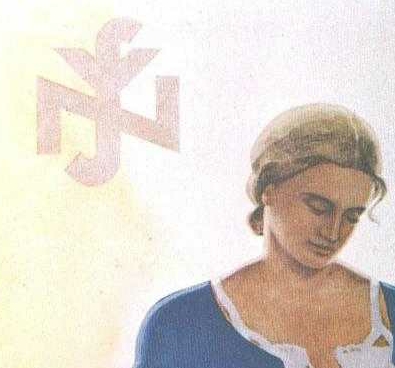
NSV National Socialist Volunteers a charity of the National Socialist German Workers' Party |
Although the swastika was an
ancient symbol for "good luck," it had other uses under the National
Socialist German Workers' Party (NSGWP). One use under the
Party was alphabetic symbolism for two "S" letters for "Socialism"
and also as an "N" and "S" for "National Socialism." http://rexcurry.net/socialism-posters/posters/mutterkind.jpg It was similar to the alphabetical symbolism under the NSV (National Socialist Volunteers), a charity under of the NSGWP. The National Socialist German Workers' Party originally was named the "German Workers' Party." Later, the name was changed to add "National Socialist" and the swastika was adopted and came to represent "S" letters for "Socialist." The new political party, the NSGWP, also adopted a new symbol (the swastika) to identify the two new words (national socialist) in its new name. The NSGWP chose the swastika's due to it overlapping "N" and "S" appearance and even altered their new symbol to further the alphabetical symbolism of the swastika. http://rexcurry.net/socialistequation4.jpg Some critics make the absurd argument that during the 25 year existence of the Party no Nazi noticed the letter shapes nor attached any meaning (nor anyone in the SS Division). They also ignore the fact that the head German socialist (and Party leader) was an ex-artist. http://rexcurry.net/socialism-posters/posters/nsv.jpg See graphics that debunk the myths in a 1935 youth's booklet at http://rexcurry.net/bookchapter4a1a3.html and posters from 1933-1945 at http://rexcurry.net/socialism-posters/posters2.html and pre-1933 National Socialist posters at http://rexcurry.net/socialist-propaganda/posters1.html and flags & banners at http://rexcurry.net/swastikaflags.html and German medals at http://rexcurry.net/socialism/germany.html and with Adolf Hitler's signature http://rexcurry.net/bookchapter4a1a4.html and http://rexcurry.net/swastikacross.html A timeline is at http://rexcurry.net/bookchapter4a1a2.html |
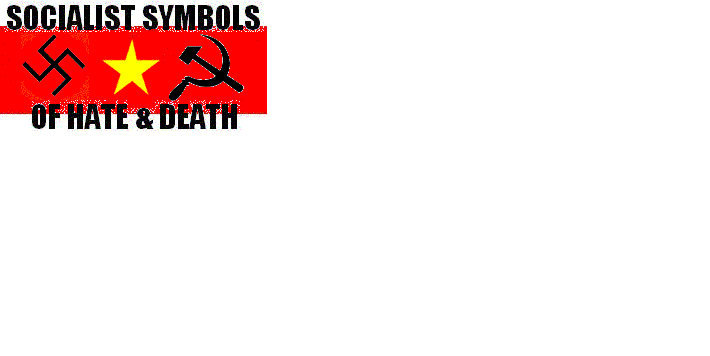
|
|

|
